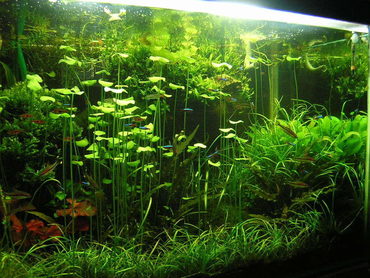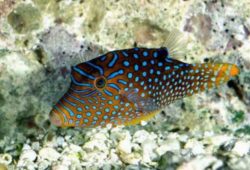Fish Tank pH: Is It Really That Important?
The article concerns the following question – Fish Tank pH: Is It Really That Important? Read any website or article of good fish keeping and the one thing that constantly pops up is fish tank pH. Tons of articles have been written about how fish are not tolerant to pH fluctuations and fish tank pH imbalance. But it really that important? And what would happen if you just totally ignored the fish tank pH altogether?

Contents
Fish Tank pH
Without being too scientific, pH is a calculation of the acidity of something. The pH scale is from 0 to 14 with 7 being neutral. Anything below 7 is acidic, the degree of acidity growing greater as it moves down the scale. Anything above 7 is alkaline. The acidity of fish tank pH is created by numerous factors including water hardness, dissolved minerals and oxygen levels to name a few.
Should Fish Tank pH Worry You?
So are fish really that sensitive to pH fluctuations? Well if the fish tank pH does reduce or increase by a unit, that is a cause for alarm. But in general, fish tank water rarely fluctuates over a unit of pH even if it is totally ignored so being overly concerned about the aquarium pH is not really that necessary.
Why is this so? Well think about it. In the wild, pH is rarely stable. The water that fish live in is constantly at the mercy of the elements. pH changes at different times of the day. pH changes at different seasons of the year. And through all these fluctuations of pH, fish that live in the wild always seem to live better than those in our well kept, well maintained fish tanks.
Just like in the wild, the fish tank pH levels in your aquarium are not stable either. It varies depending on very different circumstances than in the wild, including the type and quantity of decoration and gravel that you have, temperature, aeration, nitrate content or dissolved minerals.
Here are some of the ways that fish tank pH will fluctuate
- Aerating water for 4 hours or more can raise the fish tank pH level by one unit.
- The gravel that you use as well as the decoration and coral will increase that hardness of the water, thus raising the pH.
- Plant life decorations such as driftwood can reduce the pH of the tank water.
- High nitrate levels will reduce pH levels but do not use nitrate levels as a means to control pH because high nitrate levels are very stressful to fish.
- High temperature for extended periods of time can lower the pH levels.
- Changing water will cause pH fluctuations.
- The plants that you have in the tank will contribute to pH fluctuation just like in the wild. During the day, plants breathe in CO2 and breathe out oxygen. This increases the water pH. At night, the plants breathe out CO2 making the water more acidic.
With all this, it is easy to see that fish tank pH levels are not as important as we are made to believe. While there are fish that thrive on a limited pH range, you should not panic in the event the pH fluctuates away from these levels. Look at the reasons that I have presented above and see if there are any minor adjustment that you can do to raise or lower the fish tank pH levels. Do not try to alter the pH in haste, do not raise or lower the fish tank pH too fast as this may prove fatal to your fish.



